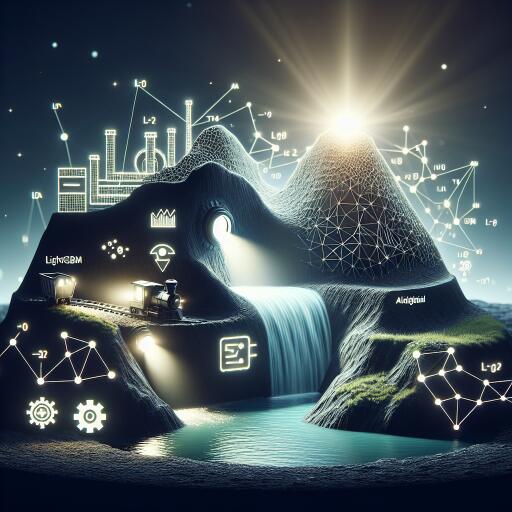Revolutionizing Mine Water Source Identification with TPE-LightGBM Technology
Mine water inrush poses a significant threat to the safety and productivity of mines, highlighting the necessity for rapid and accurate identification of water source types. A recent study focused on the Pingdingshan coalfield has brought forth an innovative approach combining data mining, classification models, and reinforcement learning to address this issue. By analyzing the chemical components of various aquifers, researchers have developed an intelligent model for water source discrimination, showcasing a significant advancement in mine water damage control and prevention.
The study meticulously selected characteristic values including Na+ + K+, Ca2+, Mg2+, Cl–, SO42-, and HCO3– from different aquifers. These included surface water, Quaternary pore water, Carboniferous limestone karst water, Permian sandstone water, and Cambrian limestone karst water. After eliminating 20 groups of abnormal samples through box plot analysis to ensure data purity, the processed data underwent rigorous testing. The unique combination of a Light Gradient Boosting Machine (LightGBM) and a Tree-Structured Parzen Estimator (TPE) was used for training, optimizing LightGBM’s main parameters, and subsequently improving the model’s accuracy by 13.9%.
The commendable enhancement in identification accuracy is not the study’s only achievement. When compared with Random Search-Multi Layer Perceptron Machine (RS-MLP) and Genetic Algorithm-Extreme Gradient Boosting Tree (GA-SVM), the TPE-LightGBM method outperformed its counterparts, achieving an accuracy rate of 0.931 and showcasing superior resistance to overfitting. This was supported by the superior generalization error RMSE scores of 0.415 for TPE-LightGBM, significantly lower than those of RS-MLP and GA-SVM.
Moreover, the study revealed that among the variable factors examined, Ca2+‘s contribution was the highest, underscoring the importance of calcium ion concentrations in water source identification. This finding suggests a more focused future direction in refining water identification techniques.
The application of artificial intelligence in mine water source discrimination is not without challenges. Traditional methods fall short in complex hydrogeological conditions and when dealing with extensive data sets. This study’s integration of machine learning, highlighted by the deployment of TPE-LightGBM, not only addresses these challenges but sets a new benchmark for efficiency and accuracy in this critical field of mine safety.
The Broader Context
The escalating depth of coal mining in areas like the North China Coalfield, arising from the depletion of shallower resources, emphasizes the growing complexity of hydrogeological conditions met underground. Such complexities render mines increasingly susceptible to water inrush incidents, significantly endangering safety and production. The innovative approach of using TPE-LightGBM for quick and accurate water source identification demonstrates a promising avenue for navigating these challenges effectively.
Previous efforts in this domain have relied on a range of mathematical and machine learning techniques, from Support Vector Machines and Naive Bayes to more complex neural networks and optimization algorithms. However, the unique challenges posed by the diversity of water sources and the intricacy of their chemical signatures necessitated a more efficient and sophisticated solution like the TPE-LightGBM model proposed.
In conclusion, the TPE-LightGBM model represents a significant leap forward in the identification of mine water sources. Its high accuracy, efficiency, and reduced computational demands offer a new paradigm for addressing the perennial challenge of mine water inrush vis-à-vis mine safety and productivity. This advancement not only cements the critical role of machine learning and artificial intelligence in geological studies but also paves the way for future innovations in mine water management and disaster prevention strategies.










